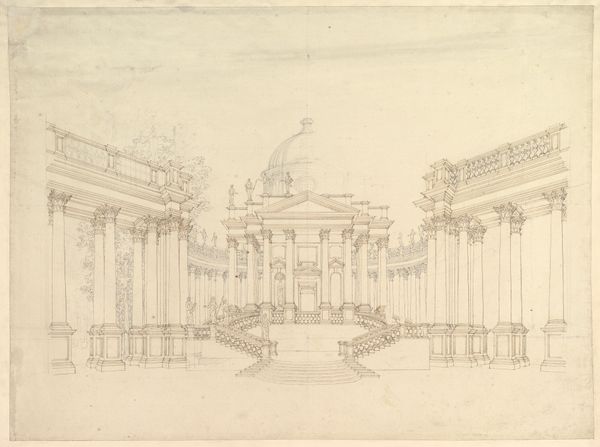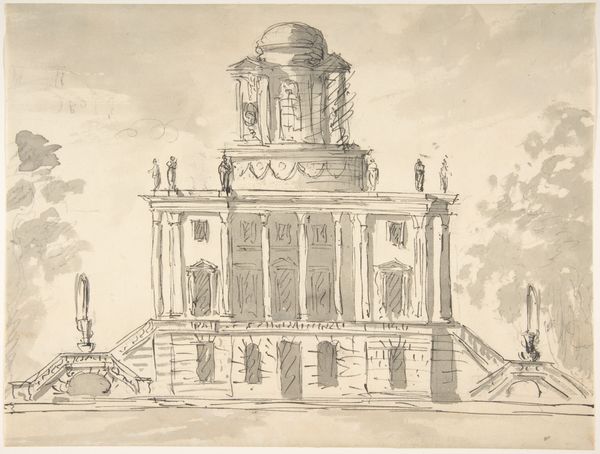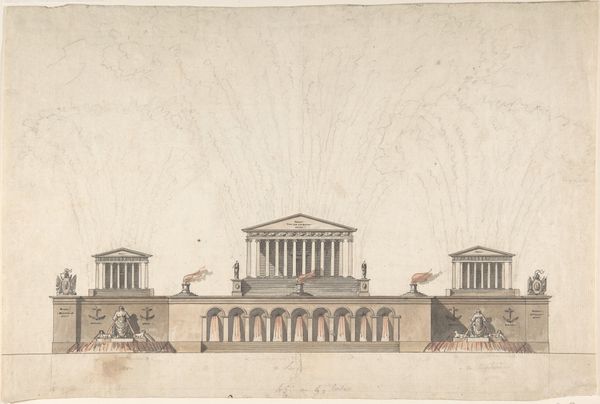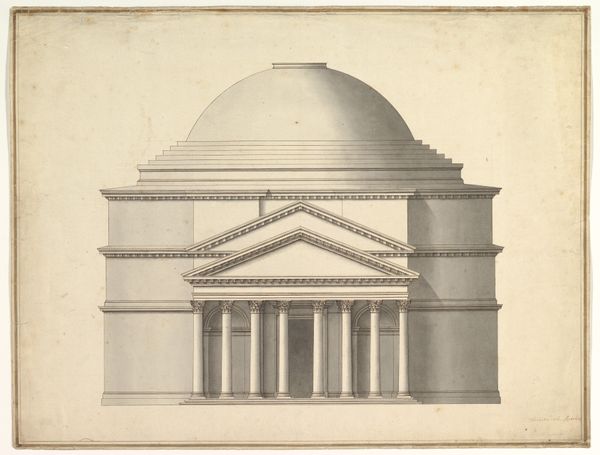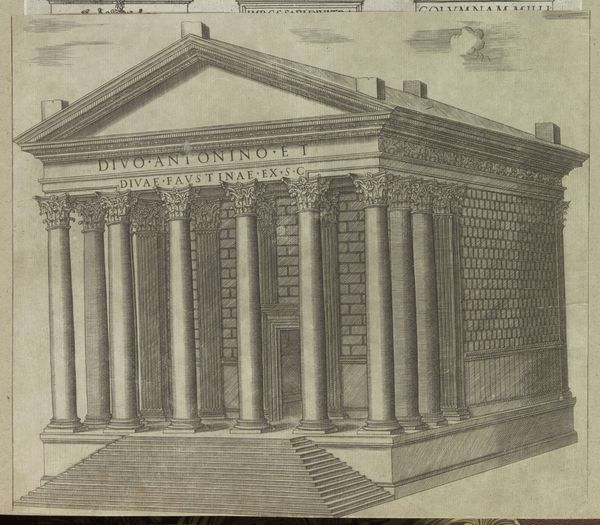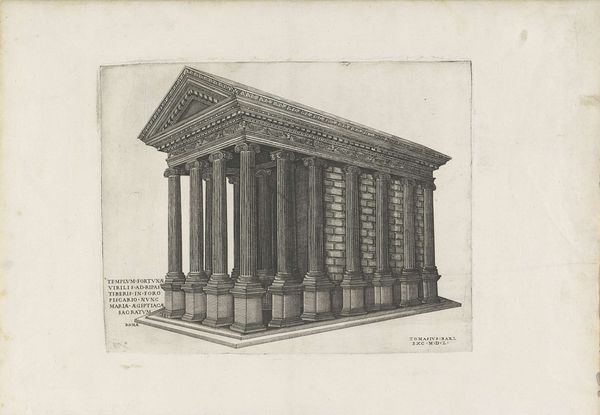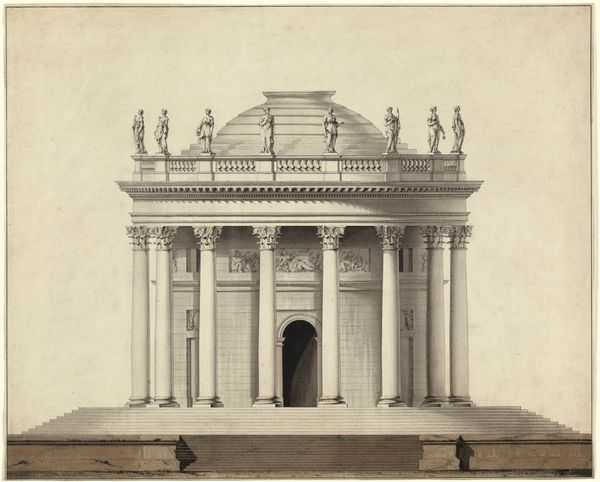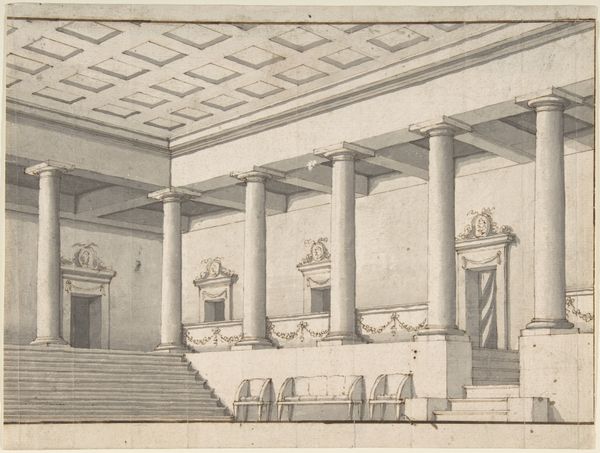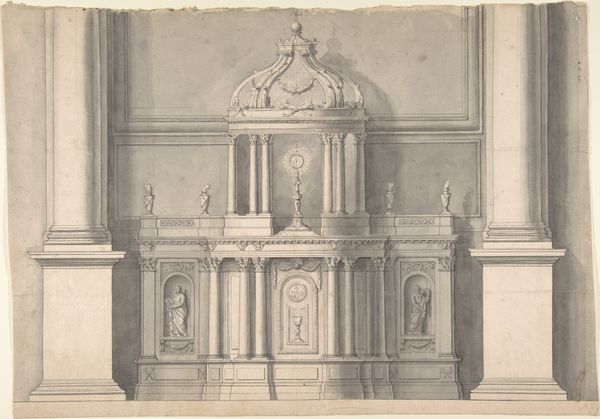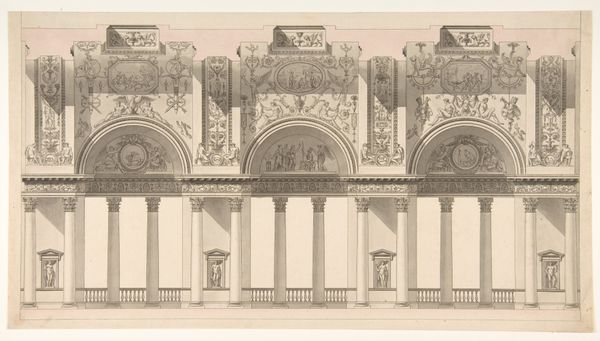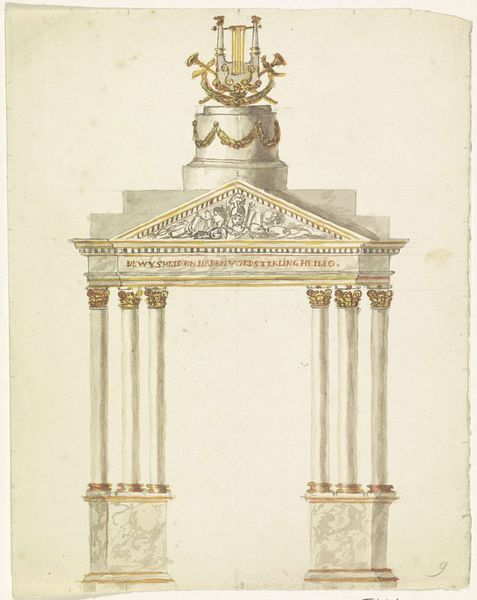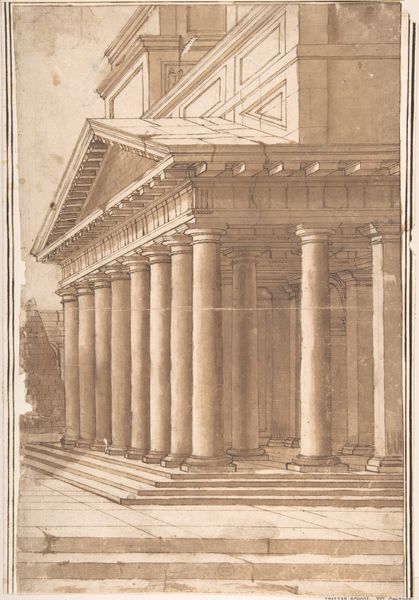
drawing, print, architecture
#
drawing
#
neoclacissism
# print
#
landscape
#
classical-realism
#
perspective
#
geometric
#
architecture
Dimensions: 10 5/8 x 15 1/16 in. (27 x 38.2 cm)
Copyright: Public Domain
Curator: Editor: This drawing, “Elevation of a Domed Corinthian Temple,” comes from around 1700-1800 and is on display here at the Met. I’m struck by how precisely it’s rendered, almost like an architectural blueprint. What details stand out to you? Curator: The drawing, being a print, points directly to its purpose: mass production. What materials would have been readily available for building at that time? And for whom was such a temple intended? Think about access to resources and the labor involved. Editor: So, rather than focusing on the artistic vision, we're thinking about the temple as a product of its society. I suppose marble wasn't cheap. Curator: Exactly. Consider the social hierarchy implicit in such a grand design. The materials themselves—stone, pigment for any coloring, even the paper—speak to the resources controlled by certain groups. Who benefits from this structure, both in its creation and its existence? Editor: That’s a perspective shift for me. I hadn't thought about the economics behind the art so literally. How does neoclassicism tie in with that material reality? Curator: Neoclassicism itself was a revival, appropriating forms of power. Its aesthetic values became linked to social power. This drawing then acts as an accessible conduit to understanding materiality within class structure. Editor: It’s fascinating to consider how the labor and economic investment shape what we see in the final "product", and even how Neoclassical style reinforces social divisions. Curator: Yes, the point isn't just what it depicts but who could afford to depict it, build it, and benefit from it. Looking at art this way invites us to question dominant narratives. Editor: I’ll never see these grand architectural drawings the same way again. Thank you for the new insights. Curator: It was my pleasure. Remember that the artwork embodies material circumstances that were available in that period, from natural stone and labor structures, to printed copies intended to proliferate these ideologies of class and material.
Comments
No comments
Be the first to comment and join the conversation on the ultimate creative platform.
